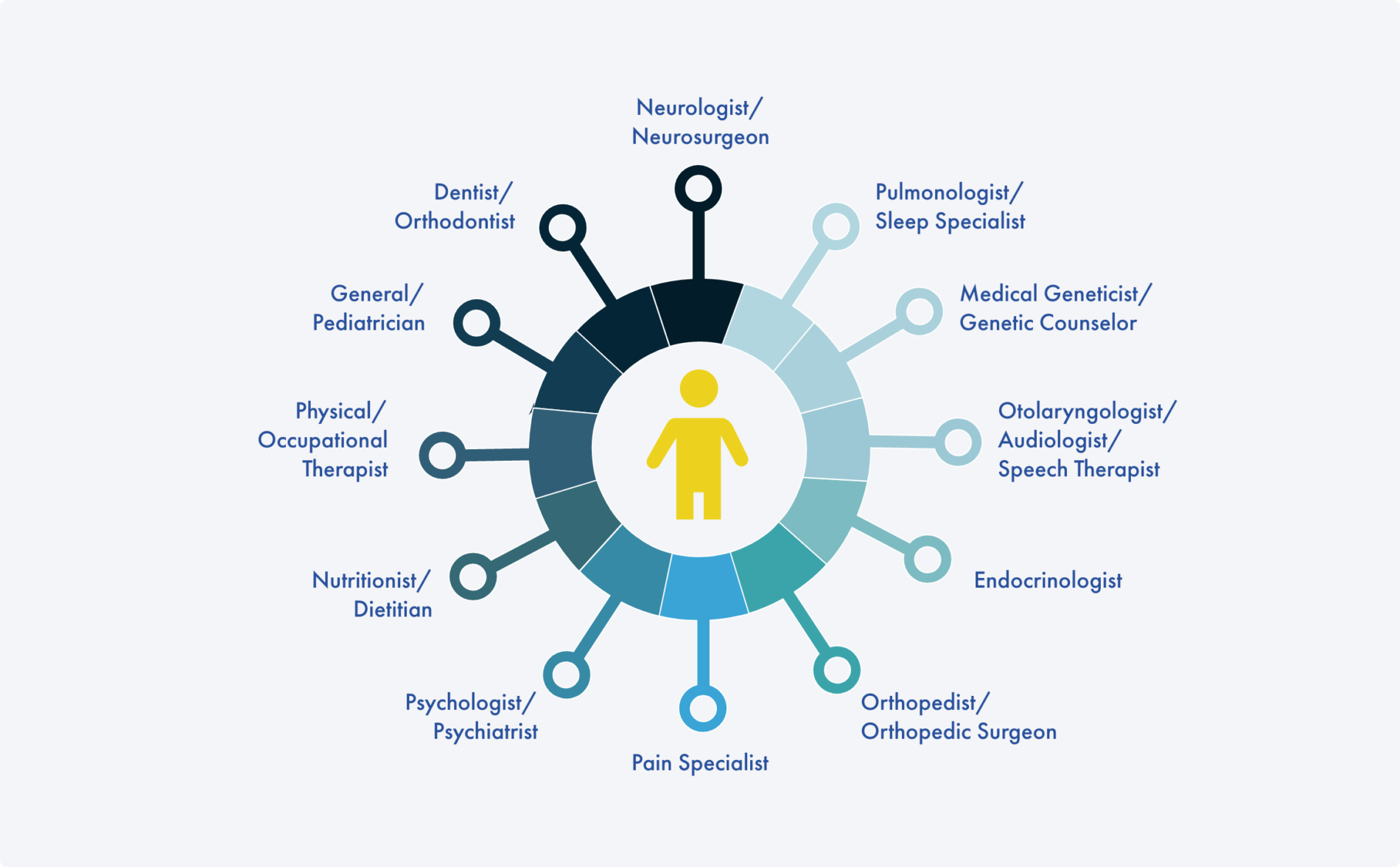Primary care providers can help to coordinate a multidisciplinary approach to care
Because achondroplasia leads to foreseeable complications, setting the proper expectations for long-term management—including assembling an engaged care network—is essential. A multidisciplinary network of specialists can provide individualised recommendations to help mitigate the multisystemic complications of achondroplasia.1




